The white cliffs of Dover are English icons, just like cream tea and football, before oligarchs bought the teams. But how many know about their twin sisters in Sussex? Some miles east of Brighton, are the Seven Sisters – white chalk cliffs, with walls to the sea, no less spectacular than their famous siblings.
From Brighton, half an hour of commuter train took us to Seaford, a town seemingly purpose-built for country-life loving middle-class people working in Brighton. A ten minute walk from the railway station, and we start ascending the cliffs. The climate here at the coast is mild, but wind is wind, and only grass and some bushes cover the chalk – thick enough to hang over the cliffs, though, so we made sure to keep safe distance to the edge. From above, looking back, Seaford resides as a patch of civilization, surrounded by rolling hills. Grasslands with sheep, forests and river valleys in between, grass and bushes on the hills, crouching to the wind – this landscape looks wild and tamed by civilization at the same time.
Minas Tirith in Sussex
From the top of the first hill, the Seven Sisters reval themselves in the distance, on the other side of a wide valley. On distance they look unimpressive, almost like a model railway landscape. Until we notice the many small moving dots around and on top: People, like ants at the foot and on top of the vertical, white walls. The cliffs grow as we approach, and gets lower, and soon the white walls tower above us, as a landscape where The Good Ones in fantasy stories reign. Minas Tirith would fit well in at the top, protecting the land from invading ships of the Dark Side. The French, presumably.
The cliffs shine in the sun, so bright I almost gotta wear shades. Seven cliffs – the Seven Sisters – pure white, rolling towards the sea, this chalk would be a rock for elves. And in the distance, a lighthouse, keeping watch and telling safe way home for elves of the sea.
Battle shields from dead algae
Norwegians have another reason to pilgrimage to the Seven Sisters: In the North Sea, the same chalk is home to the largest Norwegian oilfield, Ekofisk, as well as Valhall and other fields. More than six billion barrels of oil has floated from these fields, and Ekofisk and Valhall will chug along for many years.
Chalk is a special rock. It is entirely made up of tiny-tiny, micron-sized shells from algae. In the Upper Cretaceous, an ocean covered what is the North Sea and the Channel area, and in it lived zillions of coccoliths, algae with shells like micro-sized Frisbees or shields. So many algae bloomed, that the sea must have been white at times. When the algae died, their shells sunk to the bottom of the sea. There, they stacked like an enourmous house of cards, which through time collapsed by compaction – pressure from rocks above – and by bioturbation; digging of worms and creepy-crawlies living in the sea bottom. Up close, the chalk is messy, lumpy, more grey than white. Between the fingers, it feels porous, easily grinding to powder. We easily understand how this natural swamp is a good reservoir. In the oil fields, it is even more porous, because the oil came in and stopped water circulation from cementing the pores. The billion barrel oil fields in the chalk are extraordinary pieces of geological luck.
Mother Geology’s white canvas
The Seven Sisters are Mother Geology’s white canvas, and wind, grass and humans have painted on it, to create extraordinary pieces of beauty. Go there and get overwhelmed!
The website 10Adventures has a guided tour with GPS coordinates for the Seven Sisters.
How to get there
Getting to the Seven Sisters is easy: Trains run from London Victoria station and – if you come from The Continent – from Gatwick airport all the time, to Brighton. From Brighton, commuter trains take half an hour to Seaford. The Sisters are around an hour walk from Seaford, either across the seaside cliffs, or along paths through the countryside.
It is also possible to drive, the M23, then A23, towards Brighton, then just before Brighton, the A27 and A26 to Newhaven and A259 to Seaford.
For those who want a shorter walk, the A259 continues eastwards, and you can follow a path down along the Cuckmere River to the Sisters: The river is in the middle of the lower Google Maps satellite image.



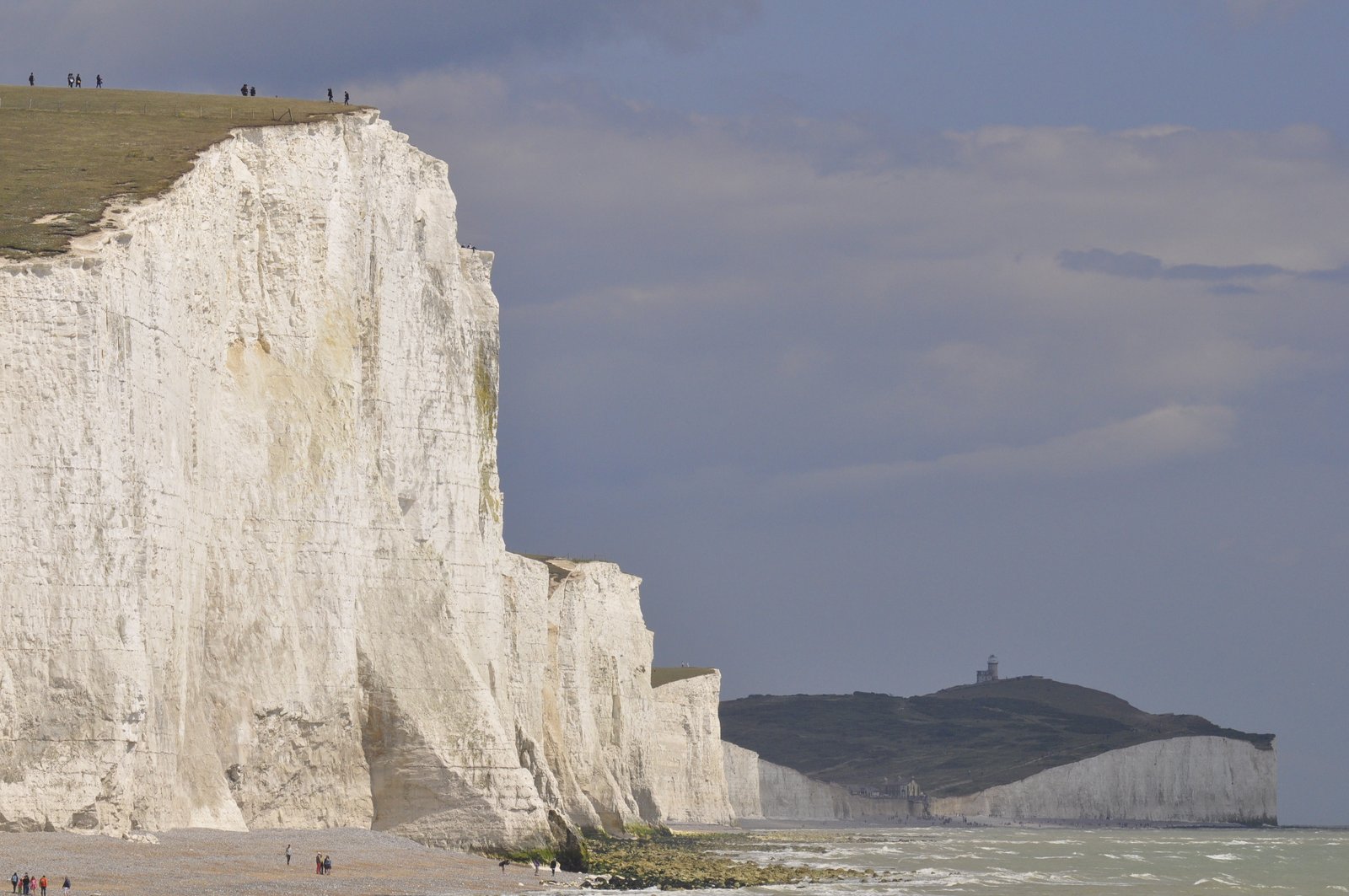
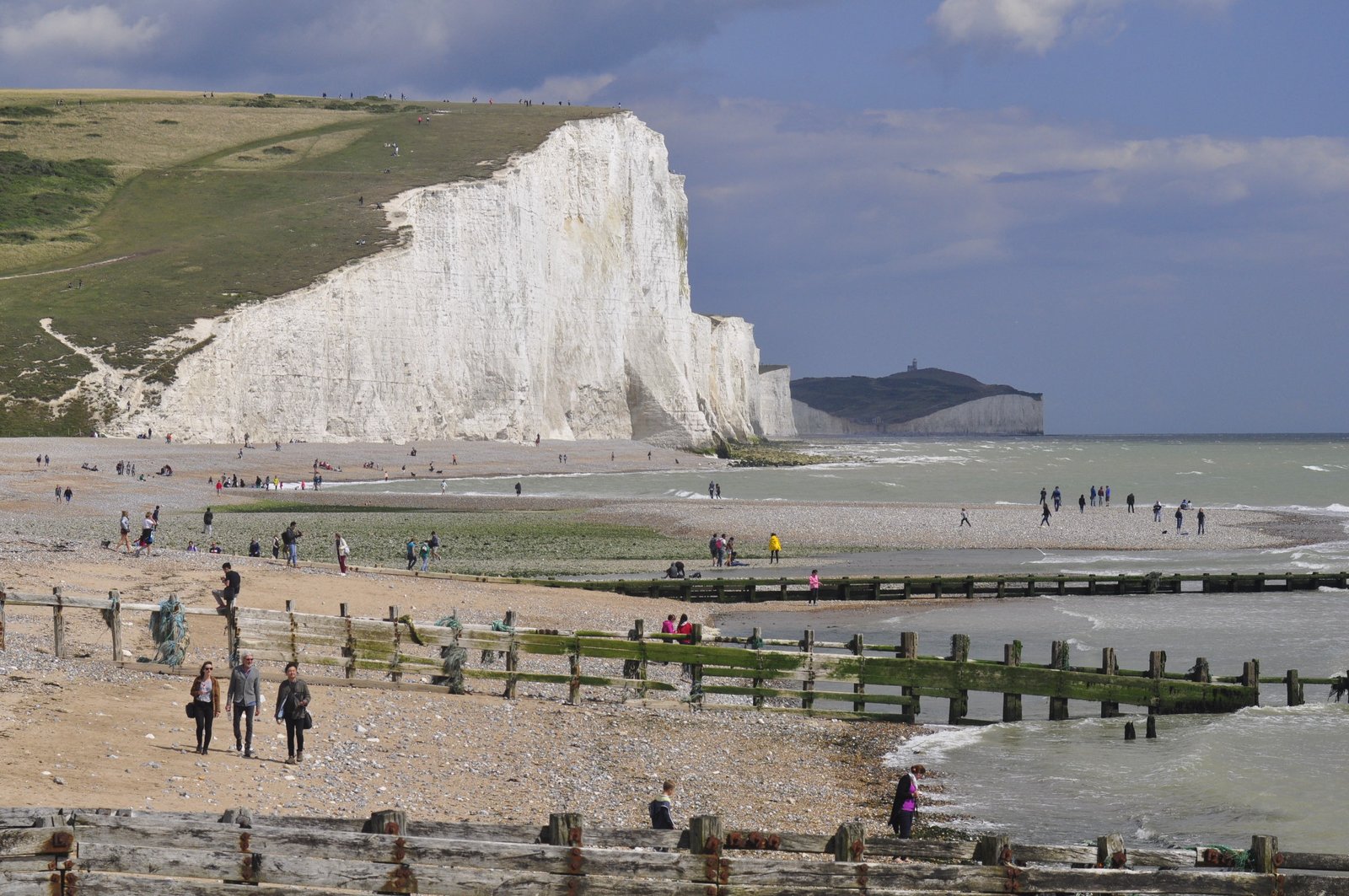
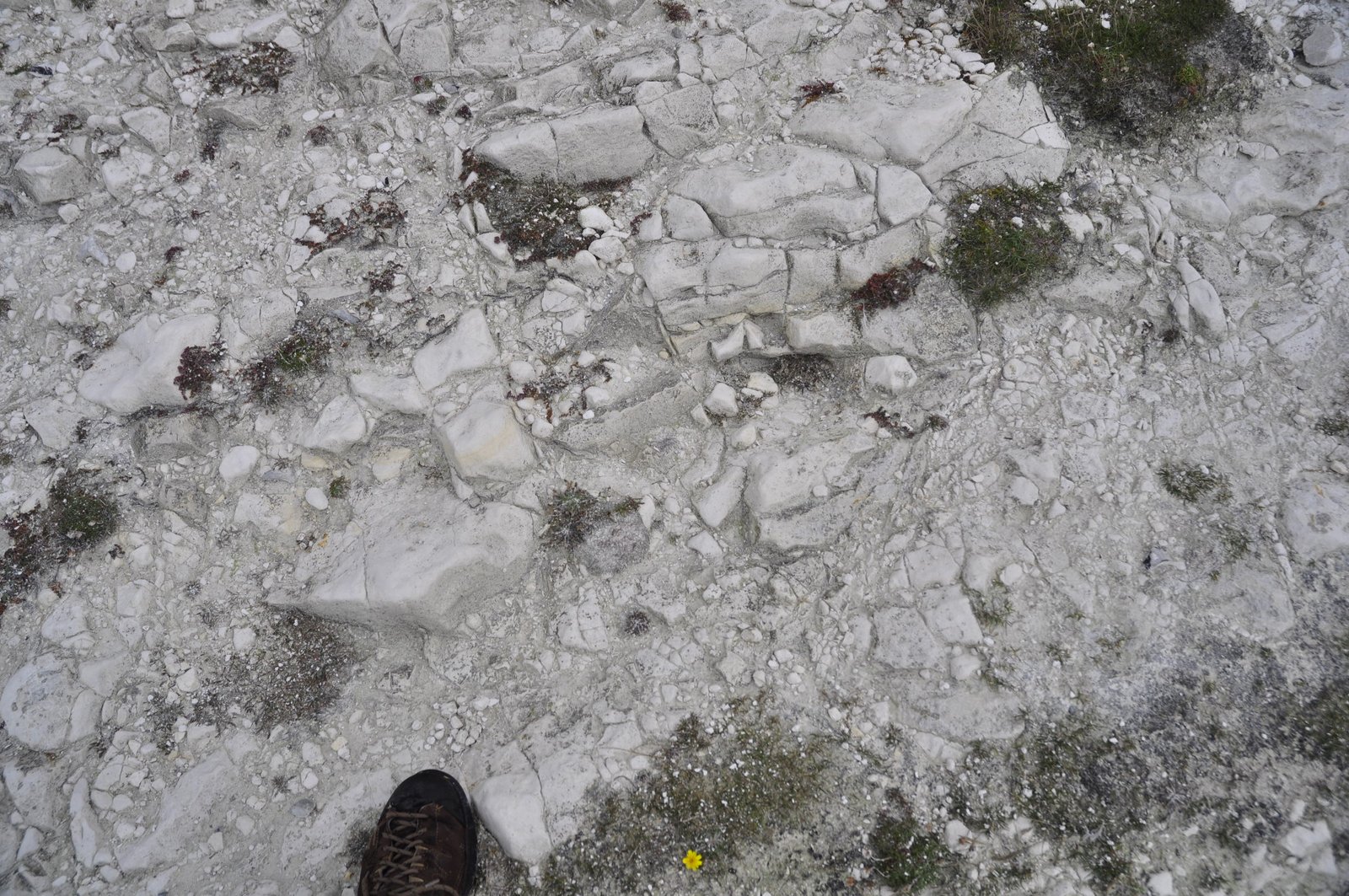
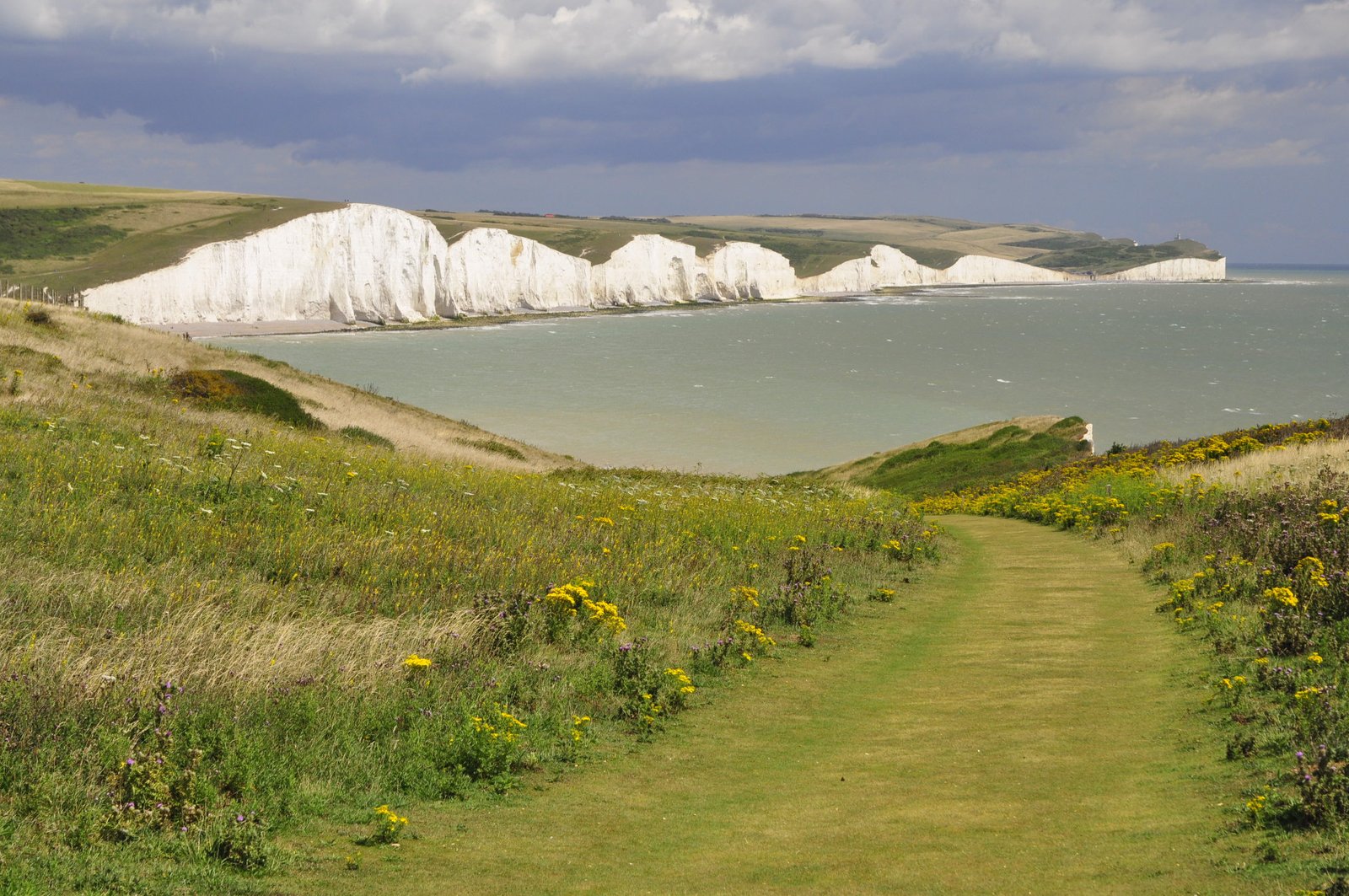

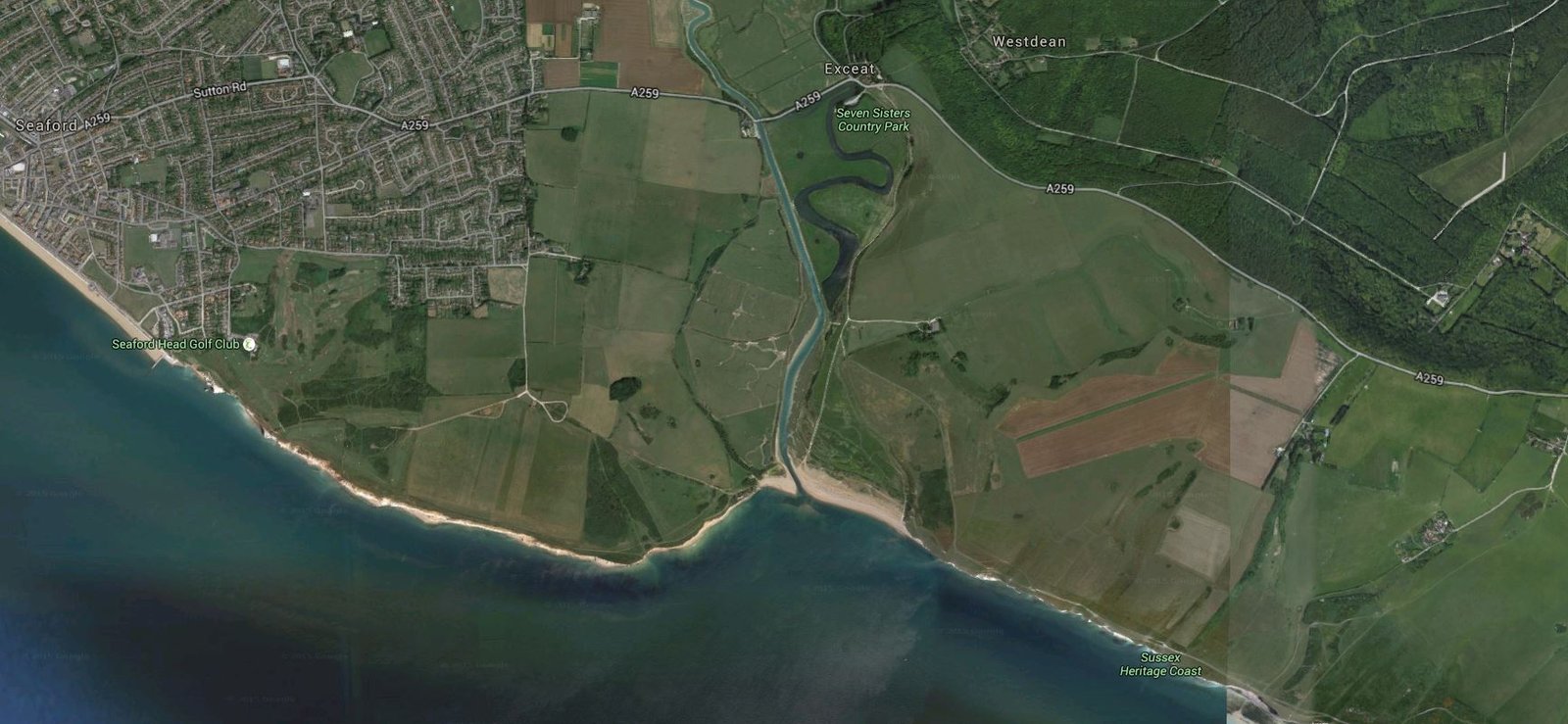
Pingback: How to make oil in a few easy steps | Adventures in geology - Karsten Eig·
Pingback: Møns Klint – where Denmark was born | Adventures in geology - Karsten Eig·